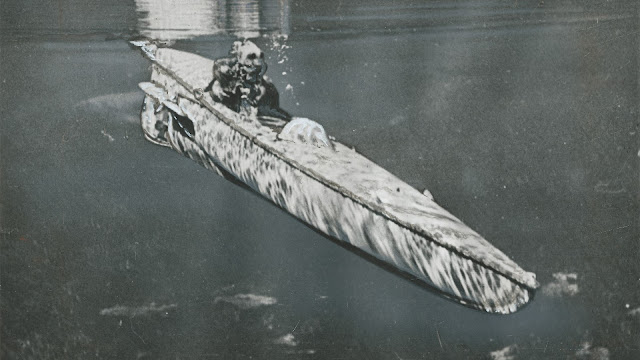Already for decades, India is a major client for the EU arms industry. According to the latest offical EU figures
available, it is the second most important destination for European
Member States' export of weapons and military technology in 2017.
Licenses valued the enormous amount of 12 billion were issued. Herewith
India followed only Saudi Arabia with € 17 billion of licenses. When
looking at the value of delivered weapons for 2017, India was in the top
6 of destinations. It takes this position for exports since 1998 (when
the EU figures where first published) until now.*
India's
Mody government recently decided to end the special status of Jammu
& Kashmir. Pakistan reacted angry and conflict looms over the
horizon. Thus pressure on India to dialogue with Pakistan is urgently
needed. The conflict not only has security impacts on the situation in
South Asia, but on Asia as a whole. While India has support from the US,
Pakistan is supported by China, making the Kashmir conflict part of a
wider conundrum. Zhang Baohui, director of the Centre for Asian Pacific Studies
in Hong Kong said. “As long as China and India are embroiled in border
disputes and strategic rivalry, Pakistan remains a significant strategic
asset for Beijing.”
But the Kashmir conflict is just one of India's security problems,
although one of the most severe seen from an international viewpoint.
India is confronted with a range of communist insurgencies, which it tries to repress violently, harming civilians during military actions. Also, according to the non-proliferation treaty
(NPT) India is an illegal nuclear power. But tolerated, because a
wanted partner of the West. Further, India has security problems on its
land and sea borders, mainly with China. From a Human Security perspective it must be noted more than one fifth of its population lives below the poverty line, according to UNDP figures. That is in absolute figures a hard to imagine 280 million people. And last but not least, the Hindu government is a security threat to the non-Hindu part of its population, not only those in Jammu and Kashmir but across the whole country.
India's economic relations and strategic cooperation with the rest of
the world is increasing fast. From this position, India wants to
diversify its acquisitions so it will not become dependent on one source
of arms supply. Russia is important as provider of arms (recently India
ordered for example the S-400 air defence system), but also the US
(e.g. the Apache combat helicopter), as well as Israel and numerous
European countries. Deliveries can be extracted from the Stockholm
International Peace Research Institute (SIPRI) in the transfers of major weapons list. In September 2019, India added a next French developed submarine to its fleet, domestically built in Mumbai.
 India tries also to become a partner for defence cooperation to
establish its own arms production infrastructure. But it is struggling
to do so for a long time. Pravin Sawhney and Ghazala Wahab, both
established authors in the field of defence, wrote in 'Dragon on our
doorsteps; managing China through military power' published in 2017:
“India has not been able to produce something as basic as an acceptable
rifle for its infantry soldiers or even a hand grenade.” This may be a
exaggeration (to stimulate more efforts from the Indian government), but
Indian defence production faces many problems, from corruption to
technology and unpredictable politics.
India tries also to become a partner for defence cooperation to
establish its own arms production infrastructure. But it is struggling
to do so for a long time. Pravin Sawhney and Ghazala Wahab, both
established authors in the field of defence, wrote in 'Dragon on our
doorsteps; managing China through military power' published in 2017:
“India has not been able to produce something as basic as an acceptable
rifle for its infantry soldiers or even a hand grenade.” This may be a
exaggeration (to stimulate more efforts from the Indian government), but
Indian defence production faces many problems, from corruption to
technology and unpredictable politics.
To improve this situation, time and again programs are announced. In September 2019, Rajnath Sing, the Minister of Defence, communicated
that India aims for a 26 billion US$ arms industry in 2015 and an
exports of 5 billion and build the “big-ticket items like fighter
aircraft, helicopters, submarines and armored vehicles. This will help
Indian private companies to evolve into global giants in coming years.”
Sing stressed that more Research and Development is key. “It is well
said that when nations go to war, the one with the best technology is
most likely to win”, he said in a recent statement. The outside world however has not much believe in the Indian efforts. India's defence industry received foreign direct investment (FDI) of a meagre $2.18 million during 2018-19.
India is in the top-5 of military spenders in the world, and so
France wants to profit from this budget and includes the transfer of
technology when selling its Rafale fighter aircraft and submarines. Lockheed Martin
has long-term plans to support India’s defence projects and make India a
manufacturing hub for its products. Tata – known in the West because
its layoffs in the steel industry – advertises its important role in the
Indian defence production. It cooperates amongst others with Raytheon
to produce components for the Singer anti-tank missile with domestic
military funds. The question what it offers to the hundred of millions
of people who hardly have the assets to live a proper living is not
asked in the megalomaniac talk about the great ambitions of the giant on
feet of baked clay.
Geschreven voor Stop Wapenhandel
* License figures are 'contaminated' because the French government issues arms export licenses for large amounts of weapon trade, much more than are exported in the end. But the value of the figures do provide insight in governmental policy towards arms exports, while figures on exports give insight in what is actually shipped. Thus both categories have their own value.



